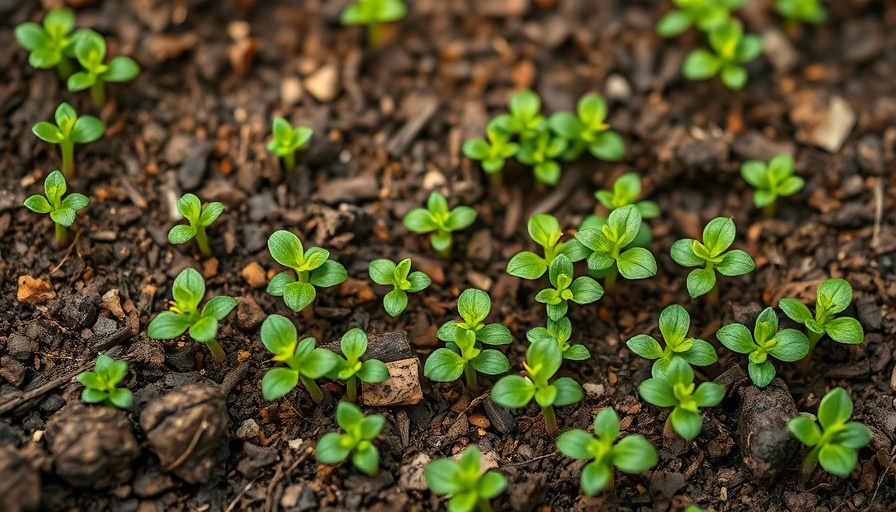
Your Essential Guide to Understanding Spurge Weeds
If you’re among the millions of homeowners in California maintaining a yard, you’re likely familiar with the challenge of dealing with weeds, particularly spurge. These invasive plants can quickly take over your lawn, threatening both its health and appearance. Recognizing and addressing spurge weeds is crucial for maintaining a beautiful outdoor space.
What Are Spurge Weeds?
Spurge weeds, belonging to the genus Euphorbia, are strong competitors in gardens and lawns. They thrive in poor, compacted soil and excel in hot and dry environments, which is why they proliferate in summer. As Julia Omelchenko, a botany expert at gardening app Plantum, notes, “Spurge can form thick mats that smother surrounding grass and plants.”
Types of spurge weeds include the spotted spurge (Euphorbia maculata), ground spurge (Euphorbia prostrata), and creeping spurge (Euphorbia serpens). Each type is similar in having small, oval leaves that can vary in color depending on environmental conditions. When damaged, these plants release a milky sap that can cause skin irritation and poses a risk to pets. This adaptability makes them particularly challenging for homeowners aiming for a pristine lawn.
Spotting Spurge Weeds: Key Identifiers
Recognizing spurge weeds is the first step in controlling their spread. Spurge can be found in non-grassy areas like sidewalk cracks and near driveways. Their distinctive features include small, oval leaves arranged in a whorled pattern around the stem, often with a reddish tint under the summer sun.
According to turf management expert Ryan Walts, spurge is also known for producing tiny green or pink flowers that emerge in the leaf axils and quickly lead to a high seed output. These seeds can remain viable in the soil for several years, complicating removal efforts.
Strategies for Removing Spurge Weeds
Effective weed management is essential to ensuring your lawn’s vitality. Hand-pulling can be effective if performed before the plants seed, but if the infestation is larger, consider alternative methods. Here are some practical strategies:
- Pre-Emergent Herbicides: Applying pre-emergent herbicides in early spring can help prevent spurge seeds from germinating. Look for products containing pendimethalin or prodiamine.
- Post-Emergent Herbicides: If spurge has already sprouted, post-emergent herbicides targeted for broadleaf weeds can be used. Always check for compatibility with your lawn's grass type.
- Regular Lawn Maintenance: Keeping your lawn healthy through regular mowing and fertilizing will help it resist weed invasion. A healthy lawn can crowd out weeds while stronger grass promotes better soil conditions.
Future Predictions: Staying Ahead of Spurge Weeds
As climate patterns shift, homeowners may see changes in weed growth cycles. Warmer temperatures could extend the growing season for spurge, making weed management even more crucial. It’s advisable to incorporate preventive measures early in the season, monitor your lawn closely, and remain adaptable with your management strategies.
Common Misconceptions About Spurge Weeds
Many people believe that pulling weeds is enough to control spurge populations. However, because these weeds can produce thousands of seeds and have a persistent root system, removal must be consistent and thorough. Conventional methods often fail if not supplemented with herbicides and regular maintenance.
Inspiring a Proactive Approach Toward Lawn Care
For California homeowners, the battle against weeds like spurge shouldn’t be seen as a chore, but rather as an opportunity to cultivate a thriving lawn. With proactive management practices and informed decisions, you can achieve and maintain a beautiful outdoor space.
This spring, take the time to assess your lawn and develop an action plan against spurge. Share your experiences with local homeowners and participate in community gardening workshops to exchange knowledge about effective weed management. A coordinated community effort can foster greener neighborhoods for everyone.
By staying informed and engaged, you not only enhance your lawn's aesthetic but also contribute to a healthier environment. Don’t allow spurge to take over; equip yourself with the knowledge to combat these pesky invaders!
Monitor your lawn for emerging spurge and take action swiftly! Join local gardening clubs or classes to share tips with fellow homeowners. Collective knowledge makes a difference.
 Add Row
Add Row  Add
Add 




Write A Comment